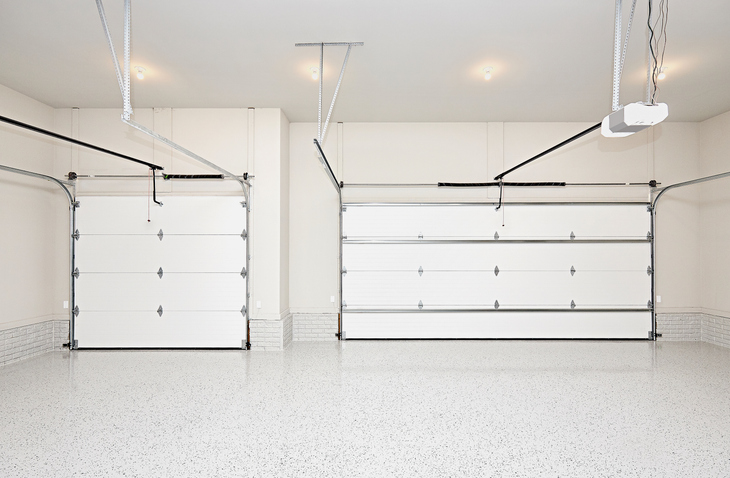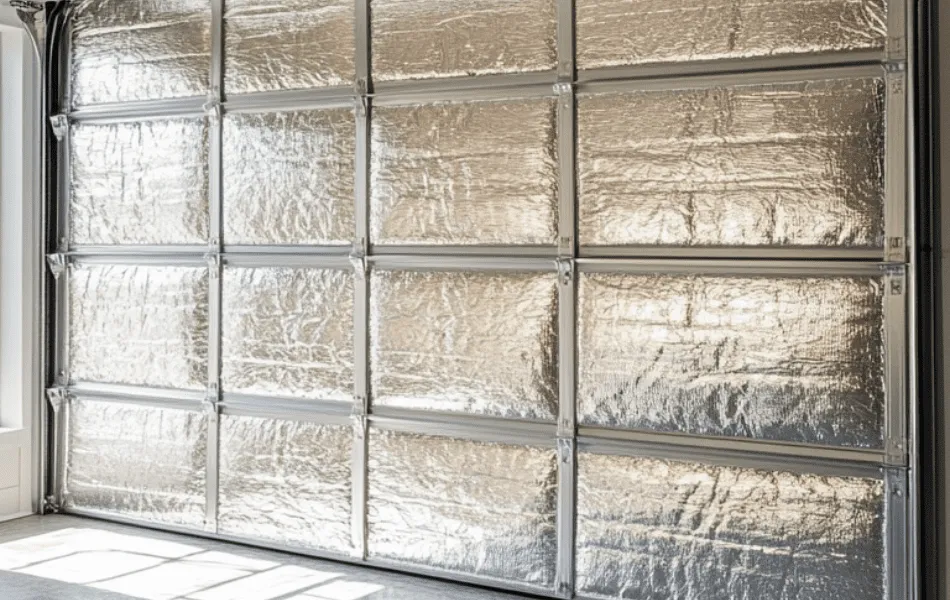When it comes to improving your home, one area often overlooked is the garage, especially detached garages. These spaces, while separate from the main house, serve essential roles ranging from storage to workshops. Therefore, ensuring they are well-insulated can enhance their functionality and protect your belongings. In this guide, we will delve into the benefits and methods of garage door insulation for detached garages.

Why Insulate Your Detached Garage?
Insulating your detached garage can significantly impact your comfort and energy savings. The primary reason is temperature control. Without insulation, the garage becomes a heat trap in the summer and a freezer in the winter, affecting any stored items. Additionally, if you use the garage as a workshop or hobby space, insulation can make it more comfortable year-round.
Energy Efficiency and Cost Savings
Insulation helps to maintain a stable temperature inside the garage, reducing the need for additional heating or cooling. This energy efficiency can lead to lower utility bills. According to Raynor, insulated doors can significantly decrease energy costs over time.
Protection for Belongings
Garage door insulation not only protects your belongings from extreme temperatures but also from humidity and pests. Insulated doors can add an extra layer of protection against these elements, preserving the condition of your items.
Types of Insulation Materials
Choosing the right insulation material is crucial for effectiveness. Here are some common types:
Polystyrene Panels
Polystyrene is a popular choice due to its cost-effectiveness and ease of installation. It provides a good balance between insulation and price. For more information on polystyrene insulated garage doors, visit this detailed guide.
Polyurethane Foam
Polyurethane foam offers superior insulation compared to polystyrene. It fills gaps more effectively, providing better thermal resistance. However, it tends to be more expensive.
Reflective Foil
This material is best for garages that face extreme heat. It reflects radiant heat, keeping the interior cooler. It’s often used in combination with other insulation types for enhanced effectiveness.
Steps to Insulate Your Garage Door
Insulating your garage door is a straightforward process. Here’s a step-by-step guide:
Step 1: Measure Your Door
Start by measuring the dimensions of your garage door panels. Accurate measurements ensure you buy the right amount of insulation material.
Step 2: Purchase Insulation Kits
Insulation kits are available at most home improvement stores. These kits often include the necessary materials and instructions for installation.
Step 3: Cut and Attach Insulation
Cut the insulation panels to fit the door sections, then attach them using adhesive or clips provided in the kit. Ensure they fit snugly to avoid gaps.
Step 4: Seal the Edges
Use weatherstripping or other sealing materials to cover any gaps around the edges of the panels. This step is crucial to prevent air leaks.
Benefits Beyond Temperature Control
Insulating your garage door offers more than just temperature control. It can also reduce noise, enhance door durability, and improve overall aesthetics.
Noise Reduction
If your garage is near living areas, insulation can dampen noise from both inside and outside the garage, creating a quieter environment.
Increased Door Durability
Insulated doors are generally more robust and durable. They withstand impacts better and show less wear over time, which can extend their lifespan.
Aesthetic Improvement
Insulating a garage door can also improve its appearance, providing a cleaner and more finished look. This can be particularly beneficial if you’re looking to sell your home and need to boost curb appeal. For more insights, explore how to match your garage door to your home exterior.
Common Mistakes to Avoid
Insulating a garage door is a straightforward process, but common mistakes can compromise effectiveness:
Improper Fitting
Ensure that the insulation fits well without gaps. Poorly fitted insulation can lead to air leaks and reduced effectiveness.
Ignoring Seals
Sealing the edges of the insulation is crucial. Ignoring this step can result in air and moisture infiltration.
Choosing the Wrong Material
Select the right insulation material based on your climate and usage of the garage. Some materials are better for cold climates, while others are ideal for hot temperatures.

FAQ
What is the best insulation for a detached garage?
The best insulation depends on your specific needs. Polystyrene and polyurethane are excellent for temperature control, while reflective foil is great for heat reflection.
How much does it cost to insulate a garage door?
The cost varies based on the material and size of the door. On average, expect to spend between $100 and $200 for a standard garage door.
Can I install garage door insulation myself?
Yes, with the right tools and instructions, most homeowners can install insulation themselves. However, for complex installations, you may want to hire a professional.
In conclusion, garage door insulation for detached garages is a valuable investment for homeowners looking to maximize space usability and protect their belongings. By choosing the right materials and following proper installation steps, you can enjoy a more comfortable and efficient garage space. For further reading, consider exploring the energy efficiency benefits of insulated garage doors.
This article contains affiliate links. We may earn a commission at no extra cost to you.










